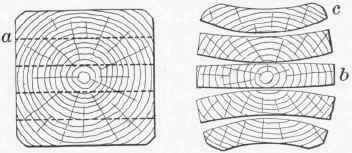A bit of information and help if you could:-
Why is my Timmber splitting - see photos
A bit of a long story short is a ordered 50 Sleepers which arrived and being hard to get down here( S.E.) i waited a couple of weeks for delievry but 75% were fresh out of the treatment tank and were showing upto 68% moisture in most. Unpertubered and eager as its my own project ( strictly DIY and Gardener by trade ) i tried to pick the driest first and cracked on.
Over the last few days and as you can see , some of the timbers are now showing some heavy splitting and as this is not a "Rustic" job im now more than likely going to relace them because looking at them for too long, hurts my brain ( slight OCD ).
What am i not taking into account so i dont make the same mistake, is it wet wood drying too fast? it has been very hot and its south facing.
Thanks in advance, any advice is most welcome



(The timber screws showing are not in the permanent postion before you wince)
Thanks again
Mono
Why is my Timmber splitting - see photos
A bit of a long story short is a ordered 50 Sleepers which arrived and being hard to get down here( S.E.) i waited a couple of weeks for delievry but 75% were fresh out of the treatment tank and were showing upto 68% moisture in most. Unpertubered and eager as its my own project ( strictly DIY and Gardener by trade ) i tried to pick the driest first and cracked on.
Over the last few days and as you can see , some of the timbers are now showing some heavy splitting and as this is not a "Rustic" job im now more than likely going to relace them because looking at them for too long, hurts my brain ( slight OCD ).
What am i not taking into account so i dont make the same mistake, is it wet wood drying too fast? it has been very hot and its south facing.
Thanks in advance, any advice is most welcome



(The timber screws showing are not in the permanent postion before you wince)
Thanks again
Mono

































